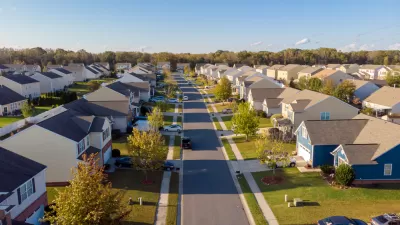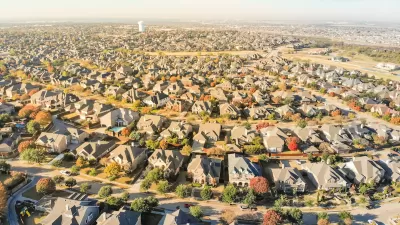Most cities know they need new development regulations, but it's much, much easier said than done.

A new book, Reinventing Development Regulation, by urban designer Jonathan Barnett and real-estate lawyer Brian W. Blaesser, makes the case for development regulation reform—a cause that has obvious and even desperate need in many communities around the United States, but still lacks the political will for widespread adoption.
The authors make the case that development regulation reform can "build sustainability and resilience, increase affordability, and improve quality of life," according to a post on the Lincoln Institute of land Policy's blog (the Lincoln Institute published the book). The authors also have ideas about how to make the politics of property ownership can be managed to deliver meaningful reform. "Their recommendations include integrating development with natural ecosystems and using regulations to manage climate change locally," according to the post. Here's a list of suggested strategies for development reform included in the book and listed in more detail in the source post:
- Relate development to the natural environment.
- Manage climate change locally.
- Encourage walking by mixing land uses and housing types.
- Preserve historic landmarks and districts.
- Create more affordable housing and promote environmental justice.
- Establish design principles and standards for public spaces and buildings.
- Implement regulations while safeguarding private property interests.
FULL STORY: Reinventing Development Regulations

Planetizen Federal Action Tracker
A weekly monitor of how Trump’s orders and actions are impacting planners and planning in America.

Chicago’s Ghost Rails
Just beneath the surface of the modern city lie the remnants of its expansive early 20th-century streetcar system.

San Antonio and Austin are Fusing Into one Massive Megaregion
The region spanning the two central Texas cities is growing fast, posing challenges for local infrastructure and water supplies.

Since Zion's Shuttles Went Electric “The Smog is Gone”
Visitors to Zion National Park can enjoy the canyon via the nation’s first fully electric park shuttle system.

Trump Distributing DOT Safety Funds at 1/10 Rate of Biden
Funds for Safe Streets and other transportation safety and equity programs are being held up by administrative reviews and conflicts with the Trump administration’s priorities.

German Cities Subsidize Taxis for Women Amid Wave of Violence
Free or low-cost taxi rides can help women navigate cities more safely, but critics say the programs don't address the root causes of violence against women.
Urban Design for Planners 1: Software Tools
This six-course series explores essential urban design concepts using open source software and equips planners with the tools they need to participate fully in the urban design process.
Planning for Universal Design
Learn the tools for implementing Universal Design in planning regulations.
planning NEXT
Appalachian Highlands Housing Partners
Mpact (founded as Rail~Volution)
City of Camden Redevelopment Agency
City of Astoria
City of Portland
City of Laramie





























